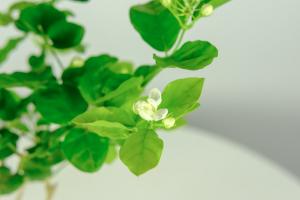Introduction
Plants are essential for the survival of the ecosystem and all living beings. They play a crucial role in purifying the air, providing food, and sustaining the water cycle. One of the essential functions of plants is to return water back into the environment. In this article, we will explore how plants return water back into the environment.
Transpiration
Transpiration is the process by which plants return water into the environment. This process occurs when the plant loses water through tiny openings on the leaves called stomata. The movement of water from the roots to the leaves and then into the atmosphere is facilitated by transpiration. The rate at which transpiration occurs depends on several factors, including temperature, humidity, wind, and sunlight. During hot and dry conditions, transpiration rates increase, and the plant loses more water.
Root Absorption
Another way in which plants return water into the environment is through root absorption. Roots take up water from the soil and transport it to the rest of the plant. However, not all the water absorbed by the roots is used by the plant, and some of it is returned back into the environment. Through a process called hydraulic redistribution, plants release water back into the soil, which helps maintain the water balance of the ecosystem.
Runoff
Runoff is the flow of water over the surface of the land, and it is another way in which plants return water back into the environment. When it rains, some of the water is absorbed by the plant's roots, and the rest flows over the surface of the land. This runoff water is essential as it replenishes the streams, rivers, and other bodies of water, providing habitats for aquatic organisms and sustaining the water cycle.
Symbiotic Relationships
Plants have unique relationships with other organisms in the ecosystem, and these relationships also play a role in how plants return water back into the environment. For example, some plants have a symbiotic relationship with fungi. The fungi attach themselves to the plant's roots, forming a network called mycelium. Mycelium helps the plant absorb more water and nutrients, and in return, the plant releases sugars to the fungi. This process not only benefits the plant but also helps maintain the water balance of the ecosystem.
Conclusion
In conclusion, plants play a vital role in returning water back into the environment. Transpiration, root absorption, runoff, and symbiotic relationships are some of the ways in which plants return water back into the environment. By understanding the importance of plants in the water cycle, we can take steps to protect and preserve them, ensuring a healthy ecosystem for generations to come.

 how many times do yo...
how many times do yo... how many planted tre...
how many planted tre... how many pine trees ...
how many pine trees ... how many pecan trees...
how many pecan trees... how many plants comp...
how many plants comp... how many plants can ...
how many plants can ... how many plants and ...
how many plants and ... how many pepper plan...
how many pepper plan...































